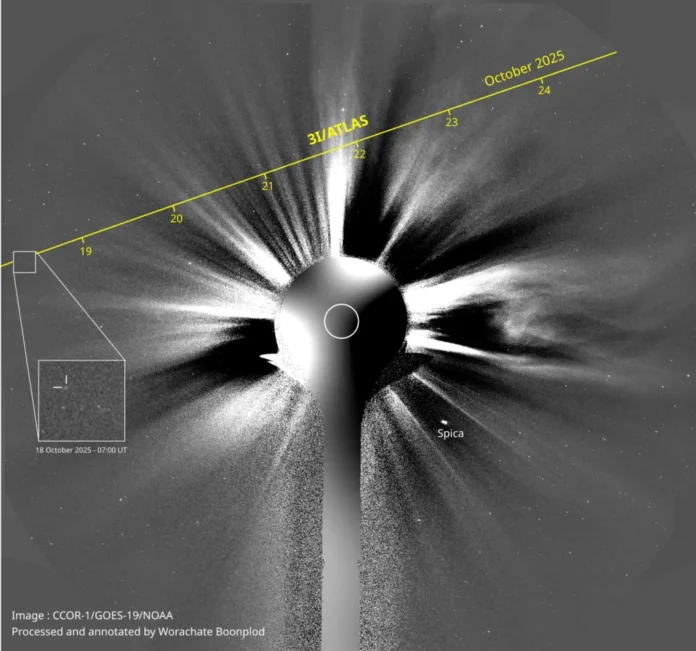
KEY DEVELOPMENTS
- Interstellar object 3I/ATLAS rapidly brightened as it swung behind the sun toward perihelion on October 29, with spacecraft observations revealing the comet’s dramatic increase in luminosity.
- Amateur astronomer Worachate Boonplod spotted the comet in images from NOAA’s GOES-19 weather satellite on October 18, noting that 3I/ATLAS was easily detectable with brightness comparable to nearby stars at magnitude 11.
- Multiple NASA and European Space Agency spacecraft including the Polarimeter to Unify the Corona Heliosphere (PUNCH) mission and the Solar and Heliospheric Observatory (SOHO) tracked the object until October 26.
NASA has been studying the icy visitor with space telescopes including Hubble, Webb, and SPHEREx, and the object is on course to venture past Jupiter in March 2026 on its way out of our solar system.
Two researchers posted a study on October 28 to the preprint server arXiv reporting that 3I/ATLAS underwent rapid brightening ahead of perihelion, estimating the comet brightened to roughly magnitude 9 at closest approach—still too faint for the naked eye but bright enough for good backyard telescopes if it were visible from Earth.


